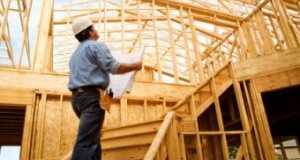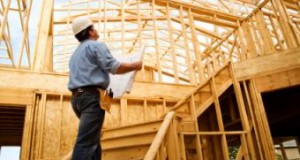According to numbers from the Census Bureau and HUD, privately owned housing starts in February were at a seasonally adjusted annual rate of 907,000, down 0.2 percent from January’s revised estimate of 909,000 and 6.4 percent below the February 2013 rate of 969,000. On just the single-family side, builders started work last month at a rate of 583,000 homes per year, 0.3 percent above January’s revised figure.
Read More »Energy Sector Growth Boosts Recovery
Nationwide, the economy and housing market are functioning at a level about 87 percent of their pre-crisis normal levels, according to the National Association of Home Builders (NAHB) and First American’s Leading Markets Index. Fifty-nine of the 350 metro markets are at or above their pre-crisis norms, according to the index, up from 58 metros last month. At the same time, 130 markets are at least 90 percent of their pre-crisis levels, according to NAHB.
Read More »Leading Indicators Show Signs of Economic Stability
The Conference Board’s Leading Economic Index (LEI) for January increased 0.3 percent to 99.5, the group reported Thursday. Also released Thursday were the Conference Board Coincident Economic Index and the Lagging Economic Index, which both ticked up slightly. Together, the three indexes represent observed changes in average weekly hours, building permits, stock prices, consumer expectations for business conditions, and more.
Read More »January Housing Starts Plummet
The Census and HUD announced jointly Wednesday that housing starts in January ran at a seasonally adjusted annual rate of 880,000, a 16 percent decline from December. The drop in starts came during a month in which homebuilder confidence in the single-family market (as measured by the National Association of Home Builders) measured at an index value of 57, reflecting general optimism.
Read More »More Markets Returning to Pre-Recession Health
As of February, 58 out of approximately 350 metro areas nationwide have either returned to or exceeded their last ""normal"" levels of economic and housing activity.
Read More »More Than One-Third of Metros Performing 90% of Pre-Crisis Levels
More than 35 percent of the more than 350 metro markets tracked in the NAHB's Leading Markets Index are performing at 90 percent or higher of their pre-housing crisis norms.
Read More »Housing Starts Reach Highest Rate in Almost 6 Years
November saw new housing starts jump to a nearly six-year high, the Census Bureau and HUD revealed Wednesday in a joint release. According to initial estimates, starts ran at a seasonally adjusted annual rate of 1.09 million, a 22.7 percent spike from October and the highest rate since February 2008. Single-family housing starts contributed 727,000 (adjusted annual rate) to November's total, while the rate for multifamily buildings was about 354,000.
Read More »Increasing Housing Permits Indicate Stability
Growing amounts of housing permits, improving home prices, and positive job numbers are leading to a stabilized housing market according to analysts. Recent studies revealed that markets in 54 out of the approximately 350 metro areas nationwide returned to or exceeded their last normal levels of economic and housing activity, according to the National Association of Home Builders (NAHB)/First American Leading Markets Index (LMI). However, policymakers still need to watch their footing.
Read More »Housing Permits Climb to 5 1/2-Year High in October
The Census Bureau and HUD jointly released their data on building permits for September and October, with data on housing starts and completions postponed due to a lack of funds as a result of the government shutdown. In October, privately owned housing units authorized by building permits were at a seasonally adjusted rate of 1.034 million--the strongest figure since June 2008. Permit activity picked up for both single- and multifamily properties.
Read More »Report: Housing Up to 85% of Pre-Recession Activity
A new index from the National Association of Home Builders (NAHB) and First American suggests that about one in seven housing markets have returned to or surpassed their pre-recessionary levels of activity. According to the association, the index registered a score of 0.85 nationwide, indicating that the national housing market is running at 85 percent of normal activity. Of the nearly 350 metro markets examined, 52 have reported levels of activity at least equal to those before the recession hit.
Read More »
 theMReport.com Your trusted source for mortgage banking news
theMReport.com Your trusted source for mortgage banking news










